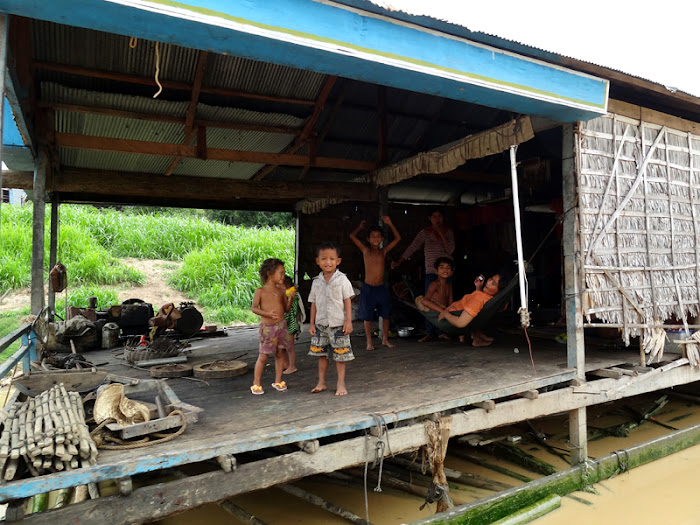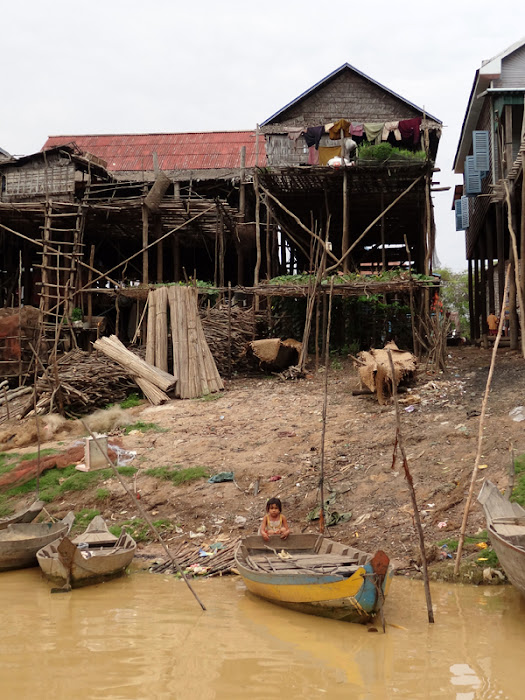Cambodia April 2012 - Exploring Angkor Archaeological Park And Siem Reap
As with most people, when I first started doing research for this trip, I didn't realize just how many temples there actually were in the area surrounding Siem Reap. I only knew of Angkor Wat, of course, and a couple of other famous sites like Ta Prohm and Bayon, and thought that was pretty much all there was to see. Boy was I wrong. There are literally hundreds of ruins within an area stretching out hundreds of miles from Angkor Wat, all in varying stages of decay or restoration.
Because I was traveling solo, I was a little more wary of exploring the entire Angkor Archaeological Park on my own, so I decided to hire a personal guide for the three full days that I would be there. Luckily, my housemate had been to Cambodia years earlier and recommended his guide, Nicky (or Yem in Khmer). Email correspondence setting up the itinerary was quick and easy, and I thought the $185 rate (excluding entrance fees) he charged was reasonable enough. He also seemed fairly proficient in English, which was very important since I tend ask a lot of questions.
Typically, almost all visitors to Angkor Archaeological Park will do the Little Circuit, which includes the most famous sites like Angkor Thom, Ta Keo, Ta Prohm, and of course, Angkor Wat. For those with more time, the Big Circuit encompasses temples that are a little more obscure and farther away. However, some of these temples are definitely worth a visit, especially because they don't attract the massive crowds seen on the Little Circuit. And for those who are a bit more adventurous, the outlying temples 20-50 miles beyond the immediate Angkor area boasts some of the most unique and stunning ruins, in my opinion.
I'll go ahead and list the temples/sites I visited on each of the three days, and then describe in detail some of the more interesting events along the way.
Day 1: Angkor Thom + Big Circuit + Banteay Srey
- Angkor Thom (Bayon, Baphuon, Phimeanakas, Terrace of the Elephants, Terrace of the Leper King)
- Preah Khan
- Ta Som
- Banteay Srey (outlying temple 23 miles north of Angkor area)
- East Mebon
- Pre Rup
Day 2: Beng Mealea + Kompong Phluk
- Beng Mealea (outlying temple 45 miles east of Siem Reap)
- Kompong Phluk (floating village)
Day 3: Angkor Wat + Little Circuit
- Angkor Wat (sunrise and afternoon)
- Ta Prohm
- Ta Nei
- Ta Keo
- Banteay Kdei
The first day actually turned out to be the longest and most strenuous, which, in hindsight, was probably a good plan. By the third day, I was pretty worn out by all the walking in the intense heat. The best advice I can give is to start the day as early as you can. Not only will you avoid some of the harshest daytime sunlight, but arriving at 6:00 or 7:00 am also affords you the opportunity to bypass the massive crowds of tourists that descend on the ruins later in the morning. Unfortunately, we arrived a little late at Angkor Thom on the first day, and Bayon was absolutely packed to the brim. It was even difficult to walk along the pathways at times because of the congestion. Still, it was quite amazing to see the famous stone faces that adorn just about every facet of the temple.
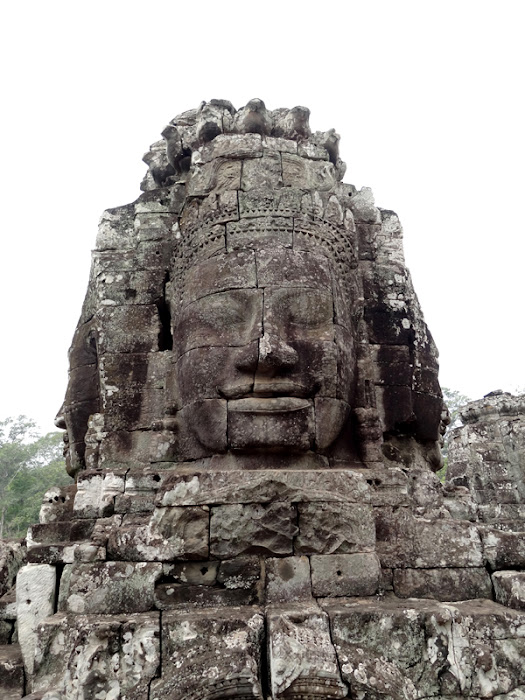 Bayon
Bayon
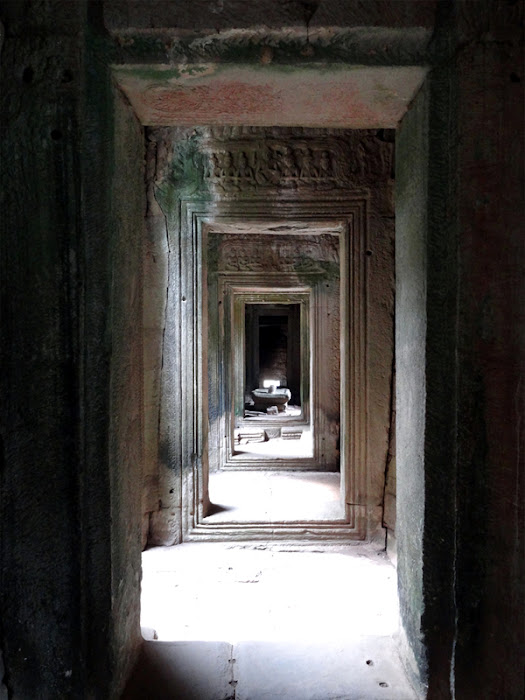
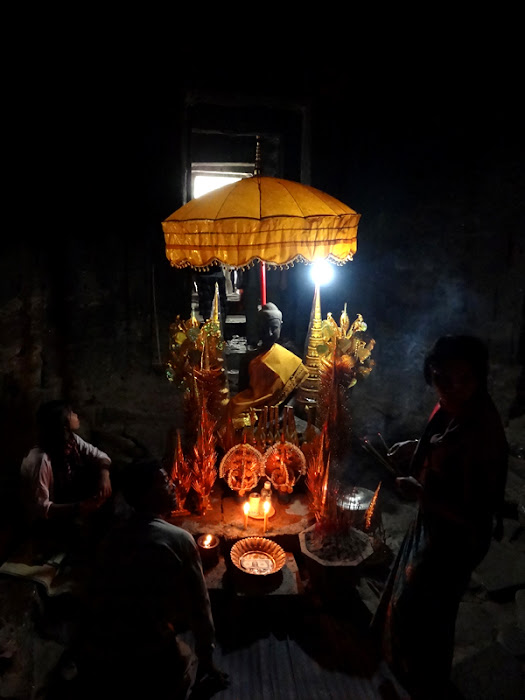
We visited the other famous sites within the ancient city of Angkor Thom, and finished off the morning hours exploring Preah Khan and Ta Som, both along the Big Circuit route. Afterwards, we headed out to Banteay Srey, approximately 23 miles north of the Angkor area. Banteay Srey is actually a very small temple built primarily from red sandstone and dedicated to the Hindu god Shiva. It is famous for its elaborate decorative wall carvings, the intricacy of which struck me as simply astonishing. When viewing the expansive carvings, you can't help but wonder how many years or even decades it must have taken to complete. Finally, in the afternoon, we returned to the Big Circuit and visited two large temples, East Mebon and Pre Rup.
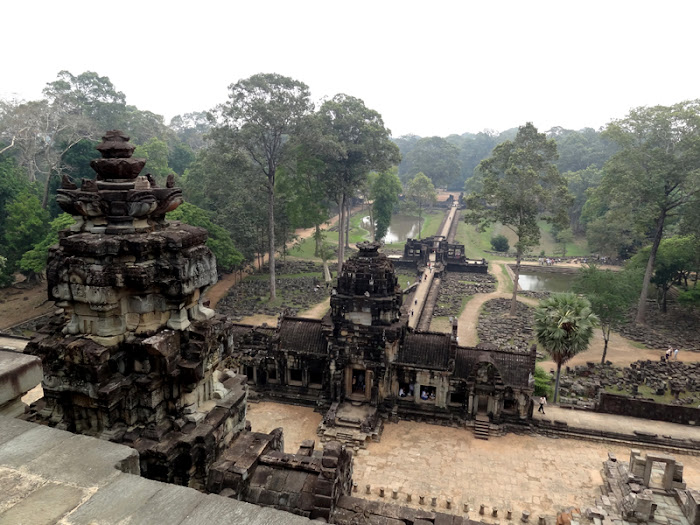 Baphuon
Baphuon
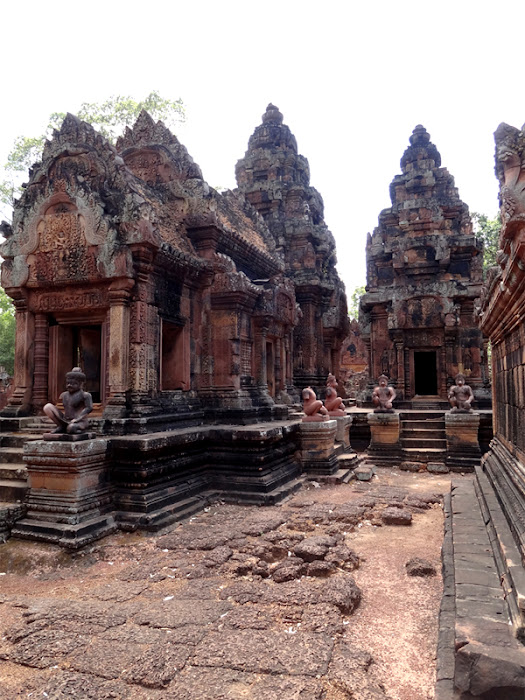 Banteay Srey
Banteay Srey

 Banteay Srey wall carvings
Banteay Srey wall carvings
 Pre Rup
Pre Rup
After the first day tour had ended, I requested to be dropped off near Pub Street in Siem Reap. While I really liked how beautiful and clean Siem Reap was, I wasn't a huge fan of this touristy area filled with bars and restaurants catering to tourists. Still, I looked around for a bit and visited the local market to pick up some souvenirs for family and friends.
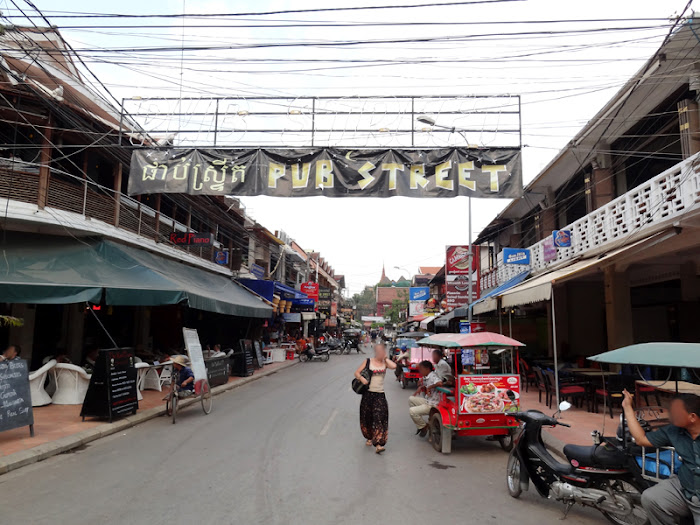

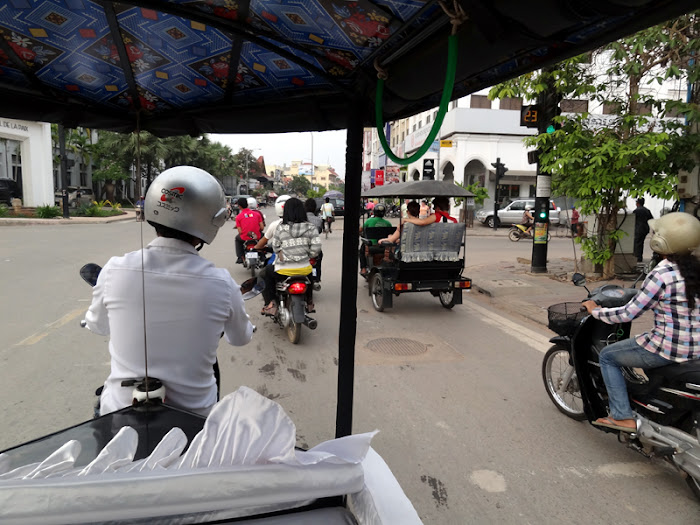
The second day was spent away from the Angkor area. We started very early with a one-hour drive east of Siem Reap, reaching the farthest temple on our itinerary: Beng Mealea. Archaeologists theorize that this temple perhaps served as a precursor to Angkor Wat due to similarities in design. However, unlike Angkor Wat, it largely remains in a state of ruin, with no attempt at restoration by the government of Cambodia. The result is an absolutely surreal (and almost eerie) atmosphere of overgrown trees and vines swallowing up the walls and canopying the entire complex. Massive stone ceilings that have caved in on itself cover virtually every inch of the temple grounds, allowing visitors to literally rock-climb their way through the corridors and halls. A light fog permeated the central courtyard while I was there, further shrouding the already dark jungle-like setting and creating a scene that was straight out of a Hollywood movie.
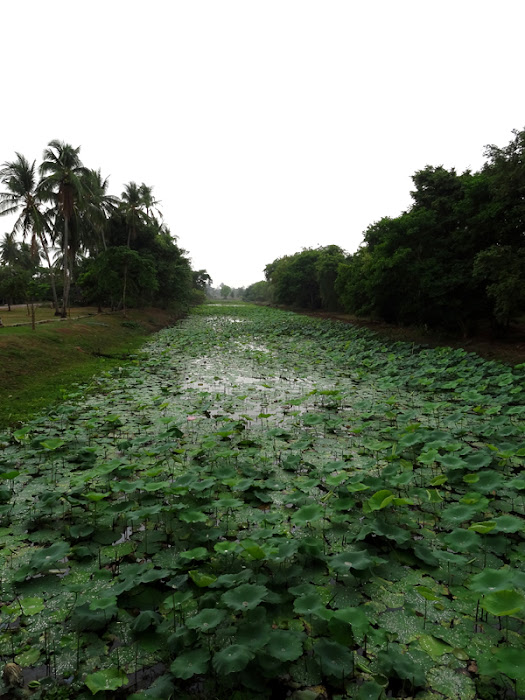 Beng Mealea moat
Beng Mealea moat
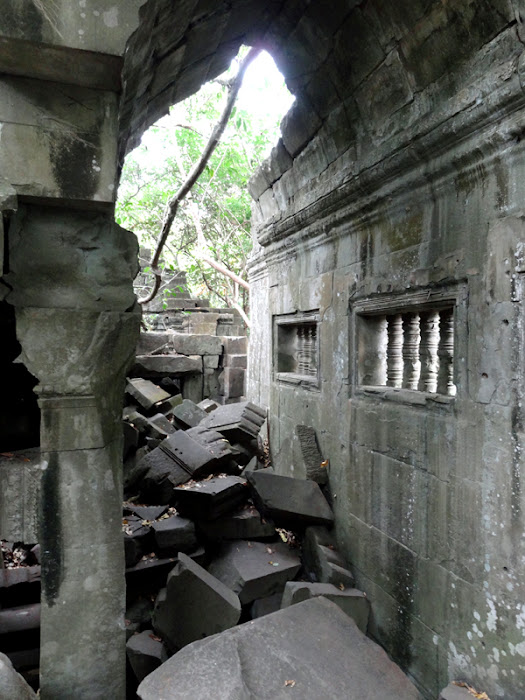
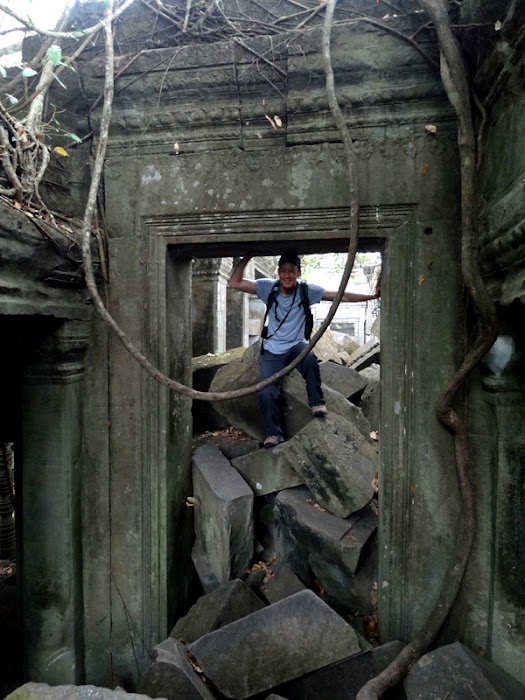
The was by far my favorite temple, perhaps even more so than Angkor Wat. You really feel as if you are an explorer discovering a lost civilization. And best of all, if you get there early enough, you have the entire place to yourself. Recent improvements made to the roads have facilitated the arrival of larger buses, and after about two hours of climbing and clambering through the structure, I noticed that a number of tour groups started arriving. While it got a bit more crowded, the good thing is that these groups tend to stay on the guided wooden paths that only take you through a limited portion of the temple. If you really want to explore Beng Mealea, get off the path and start climbing! I believe this is the only major temple where you are still allowed to do so.

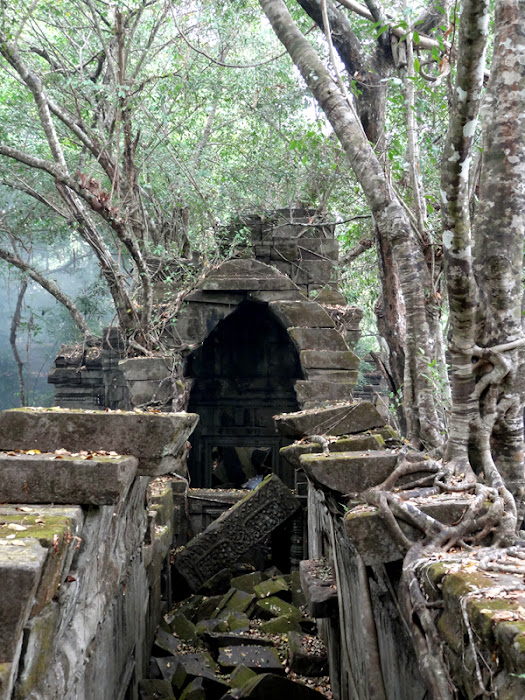
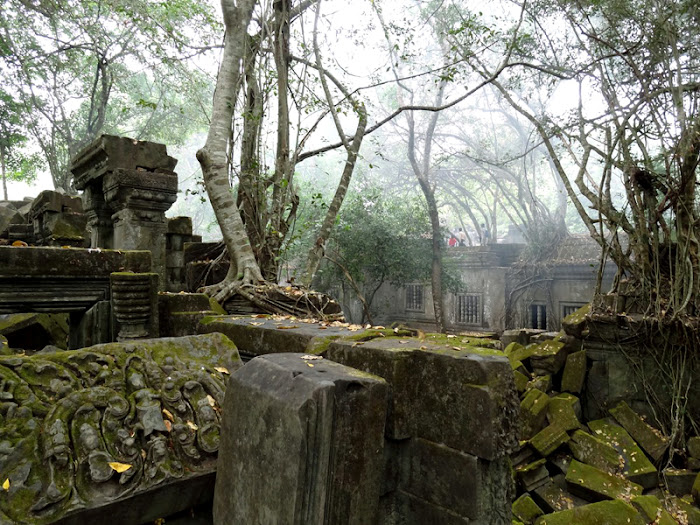
We had decided to visit the floating village on the same day since it was on the way back from Beng Mealea. Now, I had read plenty of negative reviews about visiting these places since they seem to exist for one purpose only: separating as much money as they possibly can from each and every tourist. The worst offender by far is a village known as Chong Kneas (take a look at the
reviews on TripAdvisor). I specifically told Nicky that I did not want to go there despite his suggestion that we do so (I'm pretty sure drivers and guides get large commissions bringing tourists there).
Luckily, I did my research beforehand and was set on visiting Kompong Phluk instead. A bit more out of the way, Kompong Phluk has managed to retain some of its original character, and residents still seem to go about their daily lives despite having to cater to the large influx of tourists that now arrive on a daily basis. The bad news about my visit was that I was going during the end of the dry season, meaning water levels were at their lowest. It was astonishing to see just how low the water level was compared to the height of the houses, which were all built on wooden stilts. The good news, however, was that I was also going during the low tourist season... meaning that the tour groups and massive crowds were all thankfully absent.
There were only a few cars parked at the boat launch area just outside the village, and I saw a couple of tourists milling about. Since I was on my own, I decided to just hire an entire boat, which cost $25 (I'm pretty sure I was gouged a little bit, but didn't bother raising a fuss since I liked having the boat to myself). The boat driver was a young kid who claimed he was 16 when I asked, but I swear he looked about 13 at most.
We slowly made our way through the village, and at times, the water level was so low that it became difficult to navigate the crowded river (more like a creek at this point). However, it was amazing to see the villagers going about their daily lives, hardly paying any attention to me. Little kids were happily waiving though, which brought a smile to my face. The houses on both sides felt like skyscrapers, and I wondered aloud how they managed to build an entire village on stilts. After passing through, we arrived at a vast expanse of mangrove trees near the mouth of Tonle Sap Lake. During the wet season, the water level rises above the tree trunks, and you can take a smaller boat in for a serene ride through the flooded forest. I've read some spectacular reviews about this experience, and was really disappointed I wouldn't be able to see it for myself.
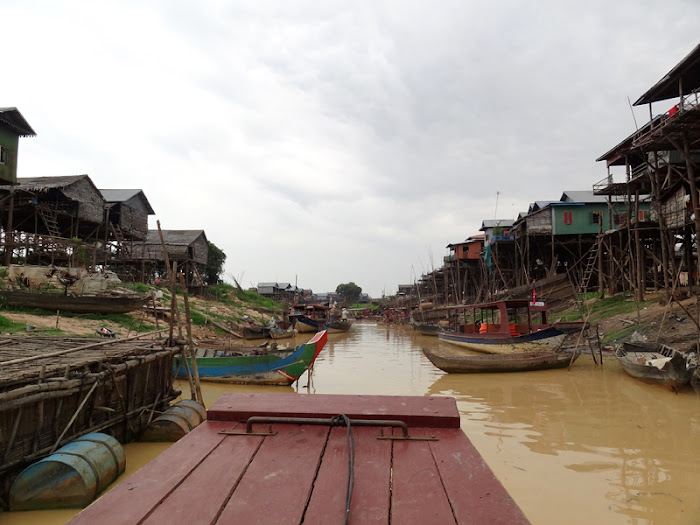 Kompong Phluk
Kompong Phluk
